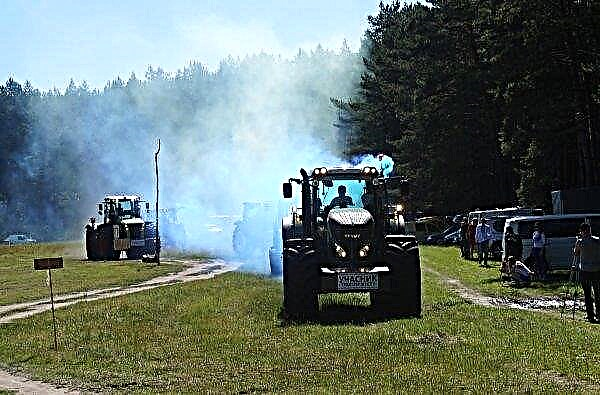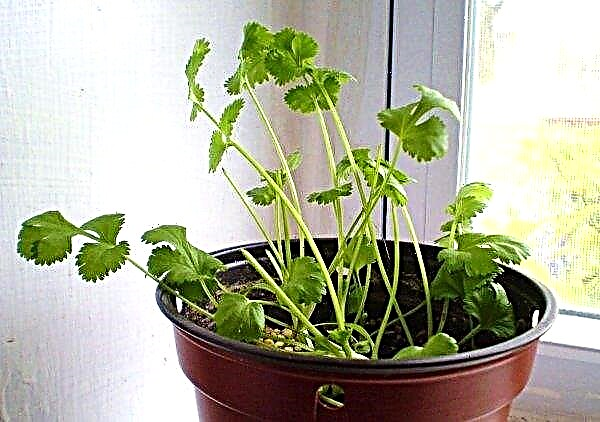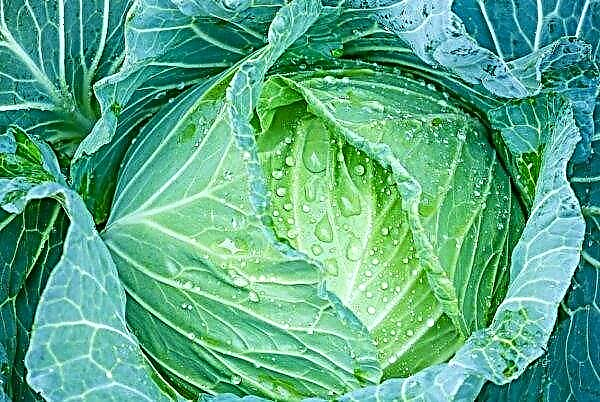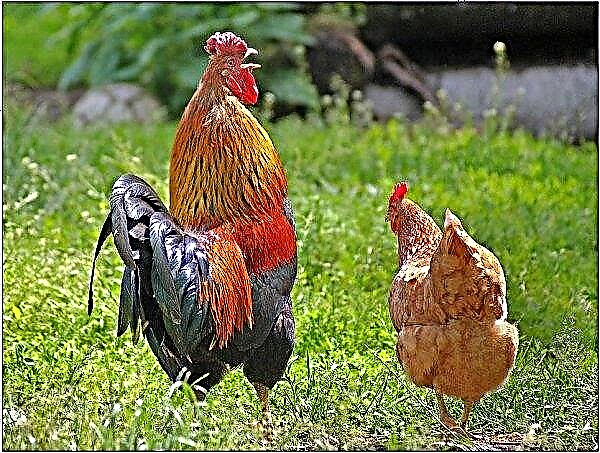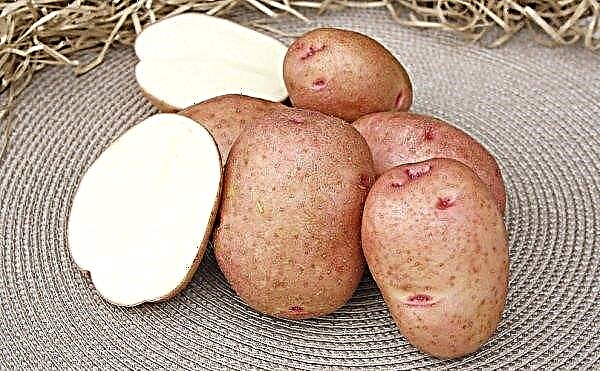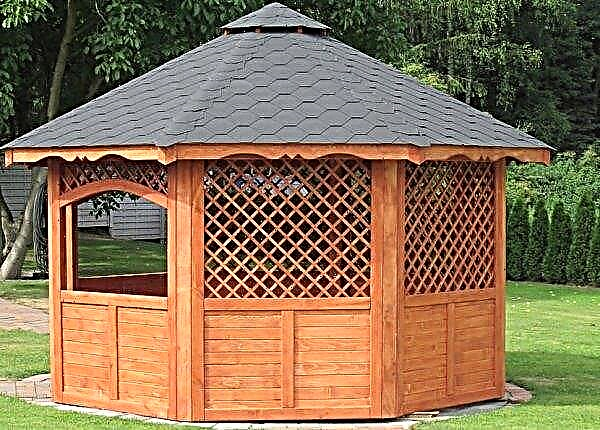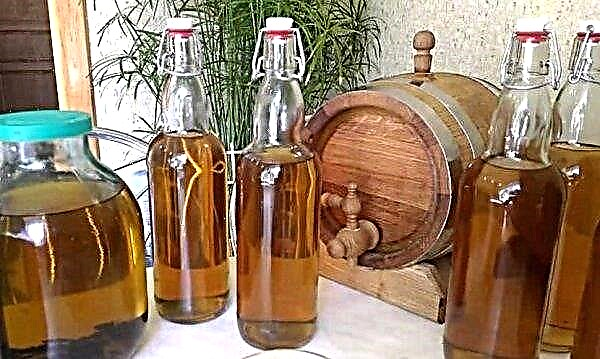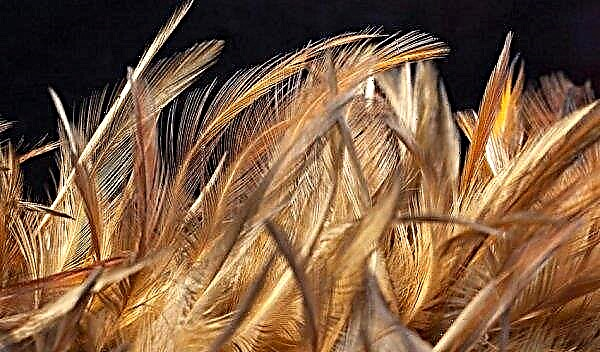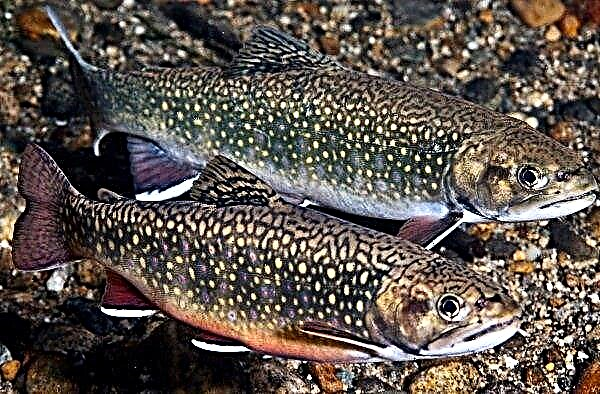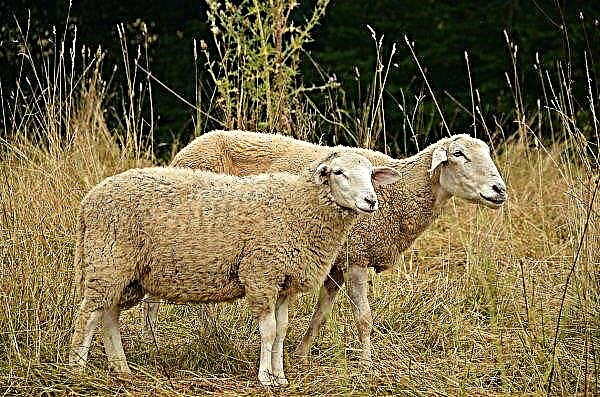The dwarf thuja Reinhold, a detailed description of which will be presented in this article, has become a favorite of gardeners in many countries who use it in landscape design. Evergreen coniferous plant, with proper planting and care, survives well and grows for many years, delighting with a variety of shades in one season from golden yellow and orange to pink.
Grade description
Thuja Occidentalis Rheingold - a dwarf decorative form of the Cypress family of the genus Thuja. It is characterized by slow growth of the broad conical and ovoid crown. In a year, it grows by about 10 cm. Bright yellow foliage in the garden stands out against the background of the general landscape and turns into a bronze-brown shade in the winter season.
By 10 years of life, the shrub grows only 1 m in height, and a maximum height of no more than 3 m is reached in 30–40 years. At the western Reingold, the branches are soft and thin, with age they become covered with scales. They develop fruits in the form of small cones of brown color, their size in diameter is 0.7 cm.
Features of growing varieties:
- sensitive to drought;
- windproof;
- develops well on light soils enriched with humus;
- wonderful haircut.
It has high frost resistance, belongs to the 3rd type of climatic zone with a temperature of -34 ... -39 ° С. He loves moist fertile soil, sunny places. Large shade in the area of the bush leads to the loss of bright yellow leaves and a high density of the crown.
Did you know? Rheingold refers to long-lived plants, since it can grow quietly for about 200 years in one place.
Application in landscape design
Home gardens are decorated and used in the design of green areas of the city in the following design options:
- Hedges. In this case, the density and compactness of the thuja crown, which create beautiful shapes, are advantageously used. This method allows you to zone the site or equip green fences. The living fence in the general garden composition looks very advantageous.
- Single landings. When planting a plant, designers play on the contrast of bright colors of the plant and the background green of the lawn. Creates an incredible look in solitary landings.
- Combined garden compositions. A fairly common version of the landing among many landscape projects. With this planting, various decorative trees shrubs of different architecture play interestingly.
- Group plantings. Usually form a microgroup of different varieties of conifers with different colors. Several Reingold grades can be used in one combination, but with different crown colors and heights.
- Can be planted in pots and containers on balconies, terraces or gazebos.
In addition to the fact that the plant gives a noble appearance to any green space, it perfectly cleans the air. Any landscape with West Rheingold looks colorful.
 Coniferous shrubs have become an indispensable decoration of many garden and landscape plantings.
Coniferous shrubs have become an indispensable decoration of many garden and landscape plantings.
How to plant
It is allowed to plant shrubs in all seasons, but in late autumn and winter it is better not to plant. Gardeners are advised to plant in April or May. The distance between seedlings is carried out taking into account the characteristics of the variety. Dwarf thuja is allowed to be planted after 1 m from each other, for large - seating is provided with a gap of at least 4-5 m between units.
Important! For planting, you should choose sunny areas. On a shaded area it will not work to create a lush and attractive crown.
Seedling Selection
You need to choose healthy seedlings, they can be determined visually during inspection. Quality arborvitae are distinguished by the following features:
- branches without visible damage;
- no dried up areas;
- no signs of rot, mold, disease, pests.
Since seedlings are sold in pots, the soil in them should be well-groomed and always without signs of mold. It is better to purchase a bush in containers, then they can be planted at any time of the year.

Preparing the landing site
Rheingold prefers fairly light, fertile and moist soils. It is best planted in clay, dry and peaty loamy sand. When laying the garden on heavier substrates, a drainage layer of 15 cm should be poured to the bottom of the pit for planting. The recess for planting itself should coincide with the size of the coma of the earth on the root system of the seedling (60–80 cm deep).
The soil mixture is prepared in advance. The most suitable composition: peat, turf (leaf) earth and sand (1: 2: 1). The most suitable soil acidity is 4.5–6.0 pH. The addition of nitroammophoska at the rate of 100 g per adult unit stimulates the active growth of the bush.
Did you know? Thuja does not tolerate the conditions of the city and gas contamination.
Phased landing
Landing technology is simple and phased:
- A deep hole is dug under the seedling - from 80 cm to 1 m deep and with the same diameter. The created hole should freely accommodate a bush with a layer of earth on the roots. The bottom of the pit is covered with an earthen mixture with wood ash, other fertilizers of organic origin can be used.
- Set the bush in the hole so that the root neck can be fixed flush with the surface of the soil.
- The earth, which was dug out of the pit, is mixed with peat and sand (1: 1) and put back into the hole with a seedling.
- Slightly trample the earth after planting.

Care
Properly caring for this variety of arborvitae - means, to carry out good watering, to feed, form a crown, loosen around the trunk circle.
Watering
Rheingold refers to plants that evaporate moisture too intensely, so they need regular sprinkling and watering, they respond well to them. From the first month of transplantation, one should systematically irrigate once a week at the rate of 1 bucket of water per adult thuja. If drought occurs during planting, the frequency of irrigation should be increased - 1.5–2 buckets per unit 2 r. in 7 days and supplement with sprinkling. During drought, young seedlings must be abundantly and often watered with plenty of water.
Important! Thuja Rheingold should be watered abundantly in spring to wake the tree evenly.
This plant adores crown irrigation, which can be performed using special nozzles. Sprinkling removes dust, freshens the appearance, stimulates the release of a pleasant coniferous smell. With irrigation, you can not be afraid to overdo it: 1-2 procedures per day will only benefit.
Top dressing
After landing on a permanent place, you must perform the first top dressing. It is carried out by growth stimulants of natural composition, for example, Epin. These funds help the plant to take root better and increase resistance to diseases. In spring, potassium-phosphorus additives can be added. It is optimal to repeat the procedure twice, with an interval of 10-15 days between applications.
However, you can not overdo it with top dressing, the tree does not need too frequent fertilizer. It is enough to feed twice a year (summer and spring) with mineral compounds for conifers or compost.

Loosening and mulching
In the growing season, the soil is loosened no deeper than 8-10 cm, since the root system of the needles lies superficially. It is advisable to perform cultivation after irrigation and weeding of weeds. They improve soil permeability and retain moisture by mulching the trunk circle with organic compounds, for example, peat or a layer of chips of 7 cm.
Trimming and Shaping
Every spring in April, dry shoots should be removed no more than 1/3 of the length. In the future, only adjust the shape. To increase resistance to high snow load in winter, the crown needs to be slightly shortened, so the overall density will increase and skeletal branches will strengthen. You should refrain from cutting and trimming in the first 2 years after planting, it should take root on the ground. From the moment of planting to the first pruning, three vegetative periods must pass.
First, weakened, dried branches are cut, determined with a degree of density. If you overdo it with thinning the crown, this will negatively affect the decorative properties of the shrub. Full air circulation will ensure the complete removal of the branches of annual growth.

With the idea of expanding the crown in width, only the upper part is trimmed. Thuja allows you to create different geometric shapes, fairy-tale characters, animals, columns. You can easily create a cascade, border or ball. The procedure is recommended when the weather is dry.
Shelter for the winter
Older trees survive winter frosts without any problems. The first winter after planting, it is necessary to cover only loose seedlings with loose burlap. The plant also suffers from winter and spring sunburn. So that wet snow does not injure the crown, in winter the branches are tightly pulled together with tape.
Disease and Pest Prevention
Needles can affect diseases and pests. The most common of these are:
- False shield - yellow spots appear on the branches. To eliminate them, solutions of “Karbofos” and “Rogor” are used.
- Fungal diseases - are manifested by characteristic foci, often on young shoots. Treatment should be started immediately as soon as it is detected. First, all affected branches are sheared, then treated with antifungal agents.
- Aphid - provokes shedding of foliage. Use "Karbofos", as described in the instructions for use, or other insecticides - "Aktara", "Decis".
- Speckled Moth - may appear on thujas in open ground. The branches become brown and the tops die off. Pests are destroyed with a solution containing pyrethroid.

With periodic feeding with mineral and organic preparations, regular watering and sprinkling during droughts, the western Rheingold pleases gardeners with excellent development and active growth. A decorative haircut of a bright and beautiful shrub will create a wonderful landscape design in any suburban area and in urban green areas.

